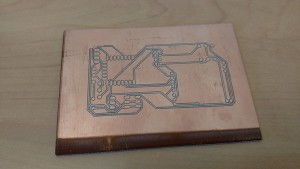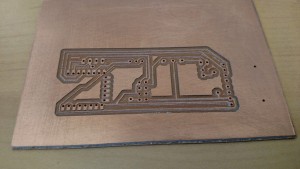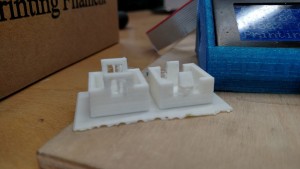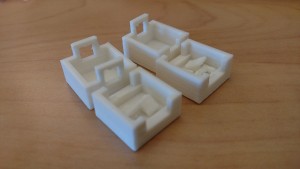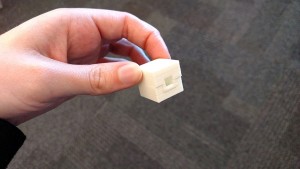We have continued working towards a stable, durable prototype.
The team ran some more proximity detection tests with the WiFi modules. They seem to be working well to detect a set threshold without too much lag in response time. They should work for our purposes.
During halves, we mentioned the potential for additional testing with Bluetooth and ultrasound to improve our balls’ distance/positional tracking. Unfortunately, the semester is quickly coming to a close. To be able to complete our balls in time, we have to forgo that additional experimentation and simply do the best we can with our current hardware functionality. Activity design will take our limitations into account.
Meanwhile, we’ve launched into the manufacturing phase of our project. Laura has been modeling and 3D printing at TechShop. Zhen brought in his personal CNC router and has been designing and cutting copper circuit board prototypes.
After a few iterations, we have managed to reduce the size of the circuit board. We initially planned to send our circuit designs to a 3rd party to get proper printer circuit boards, however, given our current time constraints, we have decided to just use the copper boards we can cut ourselves.
We also made some small test models for the 3D printed shell to test a latching mechanism, printing both with and without support material. Unfortunately, the layered nature of the print made the latch portion break almost instantly rather than flex. They would need to be printed on a different axis to change the grain of the layers, which may not be practical. On the plus side, a nice snug fit between the top and bottom halves seems to keep them together well enough, so we will use that to our advantage instead.
By the end of this next week, we hope to have everything ready for our first full playtest. The hardware should be assembled with circuit board and shell (or bubble wrap substitute) and our “virus game” activity should be up and running.

